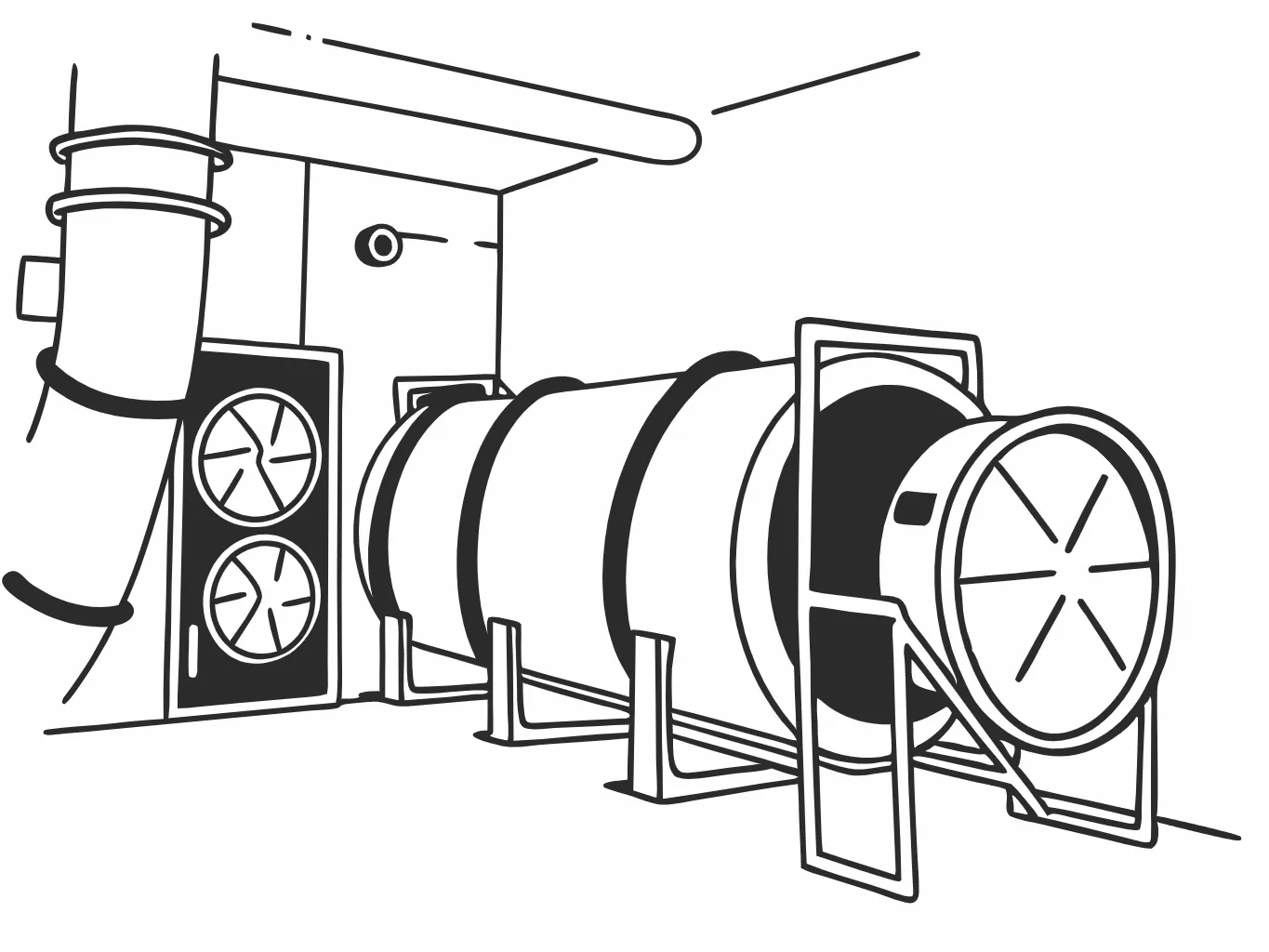In industrial drying processes, choosing the right method can significantly impact energy consumption and operational efficiency. Two common drying methods are mechanical centrifugal drying and air drying. Understanding the energy input required for each can help businesses make informed decisions that optimize both cost and performance.
Mechanical Centrifugal Dryers
Mechanical centrifugal dryers use centrifugal force to remove moisture from materials. This method involves placing wet materials in a rotating drum or basket. As the drum spins, centrifugal force pushes the moisture out of the materials and through perforations in the drum.
Energy Input for Mechanical Centrifugal Dryers:
- Electricity Usage: The primary energy input for centrifugal dryers is electricity, which powers the motor that spins the drum. The energy consumption depends on the motor’s power rating and the duration of operation. Typically, these dryers are energy-efficient because they quickly remove large amounts of moisture, reducing the need for prolonged drying times.
- Efficiency: Mechanical centrifugal dryers are highly efficient for materials that can withstand the mechanical action. They are particularly effective for textiles, plastics, and small metal parts. The rapid removal of water reduces the need for additional drying processes, saving energy in the long run.
- Operational Costs: While the initial investment in a centrifugal dryer can be higher, the reduced energy consumption and faster drying times often result in lower operational costs over time.
Air Drying
Air drying involves exposing materials to air, either at ambient temperature or with heated air, to evaporate moisture. This method can be passive (natural air drying) or active (using fans or blowers to circulate air).
Energy Input for Air Drying:
- Heat Energy: If heated air is used, the primary energy input is the fuel or electricity required to heat the air. This can be significant, especially if high temperatures are needed to achieve desired drying rates.
- Electricity for Fans/Blowers: Active air drying systems use fans or blowers to circulate air around the materials. The energy consumption depends on the power and efficiency of these devices.
- Time and Space Requirements: Air drying generally takes longer than mechanical drying, which can lead to higher energy consumption over time. Additionally, it requires more space, as materials need to be spread out to ensure even drying.
Comparative Analysis
- Speed and Efficiency: Mechanical centrifugal dryers typically offer faster drying times and higher efficiency, making them suitable for high-volume operations where time is a critical factor.
- Energy Consumption: While air drying can be less energy-intensive if using ambient air, the extended drying times and potential need for heated air can offset these savings. In contrast, centrifugal dryers, despite their initial energy spike, often consume less energy overall due to their speed and efficiency.
- Material Suitability: The choice between these methods also depends on the material being dried. Delicate materials may not withstand the mechanical forces of centrifugal drying, making air drying a better option despite its higher energy input.
Conclusion
When comparing energy input, mechanical centrifugal dryers generally offer a more energy-efficient solution for suitable materials, thanks to their rapid drying capabilities. However, air drying remains a viable option for materials that require gentle handling or when energy costs are less of a concern. Businesses should evaluate their specific needs, considering factors like material type, drying speed, and energy costs, to choose the most appropriate drying method.



